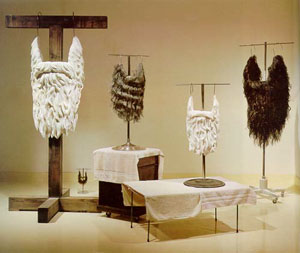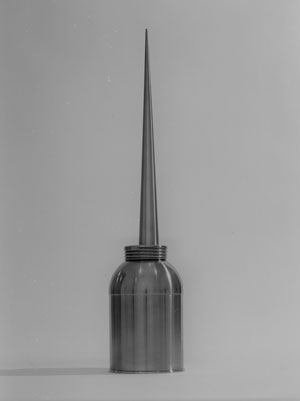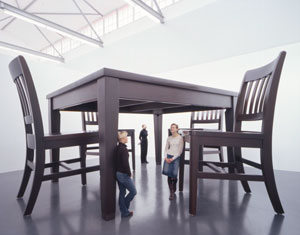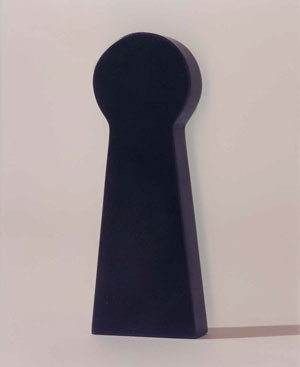Robert Therrien At Inverleith House
It’s been a while since I posted an interview to the site, so it seems fitting to return with something of an exclusive. LA-based artist Robert Therrien doesn’t usually grant interviews, but kindly agreed to answer a few questions via email for a preview of his first solo show in the UK, at Inverleith House, Edinburgh.
(My apologies for the simple nature of questions - I never quite know how to handle interviewing people via email, without the to-and-fro of a live conversation.)
Motifs and themes - domestic and familiar objects are often the subject of your work. Why? What prompts you to transform or investigate this subject matter?
The familiar and the unfamiliar both have fascinations.
In the bigger world, some objects may appear domestic. In fact, they’re my own things I use everyday, for example Table and Chairs is directly based on the table I’ve had forever and the plates are what I eat off of everyday.
A good example of the unfamiliar would be the beards. I don’t have a beard, and in fact I don’t know many people who do. Something interesting developed while working on them. They’re essentially costumes. They’re an attempt at the unfamiliar. In fact, they’re fake beards that ended up not even necessarily being male.

Also, the motifs and themes change from day to day, but over longer periods of time it becomes clear they inevitably always repeat. For example, the chapel turned into the oilcan. It’s still a chapel actually - a chapel of oil.

Scale - much of your work plays with scale, calling to mind Alice In Wonderland, and fairytales. How did this aspect of your practice develop? What makes it a continuing source of inspiration/working method?
The artist’s point of view - from the small world - could be viewed as a large gesture publically. The practice is creating something both large and small.
Publically, Table and Chairs is perceived as a big object, where it actually originated from a small detail-a corner bracket supporting the table leg. Instead of crawling underneath and photographing an actual table in order to see it, why not shrink yourself and take a normal snapshot?

Also, by changing their environment (size of the room), Table and Chairs is capable of being small - in a large depot, for instance - or large, in a residential room, like the one at Inverleith House.
In the end, none of this really matters because Table and Chairs isn’t such a big scale issue anyway. It’s only three times the actual size. A better example is Keyhole which is probably one of my smallest sculptures, but it’s fifty times bigger than an actual keyhole. I don’t even know how much the teardrop might be blown up in scale.

Balance - broadly speaking, your work seems to find a balance between the conceptual and the visual/physical. Is this something you aim for? Is there a conflict between the formal aspects of your work and their conceptual basis?
There is a balancing act - perhaps that’s true. There’s a huge conflict between what an object ends up being and the idea which started it.
Things duplicate and replicate.
For example, photographing under the table branched off and turned into several objects.
Also, in my sketchbooks one subject directly or indirectly on different levels unfolds. Architecture, male, female, oxygen-there’s all kinds of subjects in there.
In fact, a person could become unbalanced if it weren’t for sketchbooks.
A shift in practice - it seems as if your recent work is, again broadly speaking, more representational than earlier work, and tends to return to/revise/refine various themes. Is this indeed the case, and if so, what prompted the shift?
People my age grew up with abstraction. Many of us worked our way out of it, where abstract artists had worked their way out of the representational. Sometimes I think maybe we should work our way back - maybe we were better off.
Also, project after project, the capability of representing the real naturally improves, while over 25 years the same forms and themes inevitably persist.
At the same time, I don’t aspire unconditionally to representational work.
More information: Robert Therrien, Los Angeles County Museum of Art, Minimalist Fantasia - a profile by Hunter Drohojowska-Philp, Robert Therrien - a profile at The Broad Art Foundation.

 Submit Response is a weblog by Jack Mottram, a
Submit Response is a weblog by Jack Mottram, a
dont you just love those fake beards? it has inspired me to knit one in honour of lenny’s new found hirsute status!
Posted by badgergirl at 5pm on 29.07.04